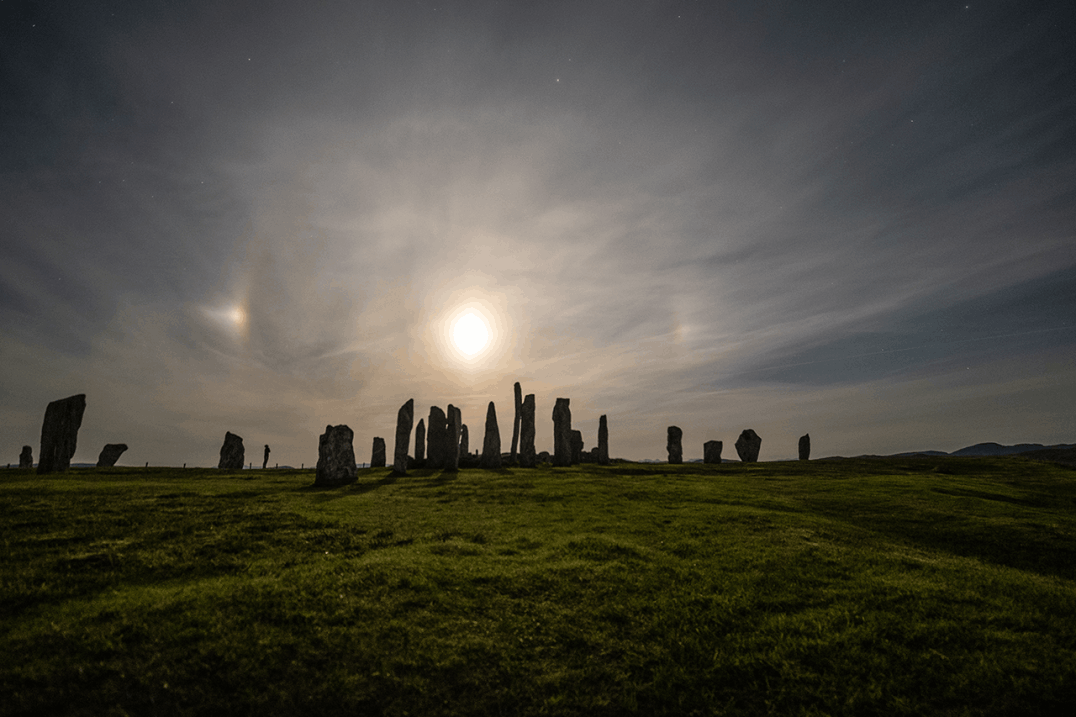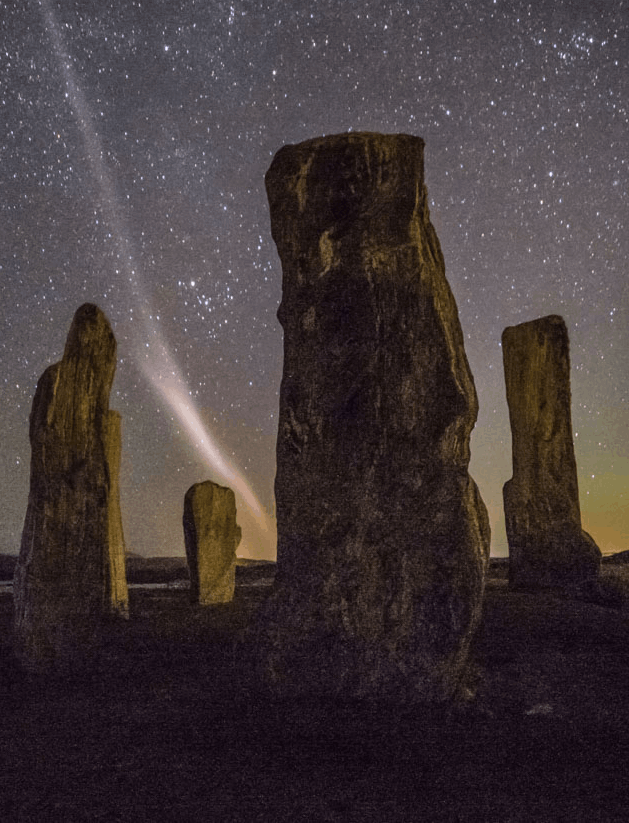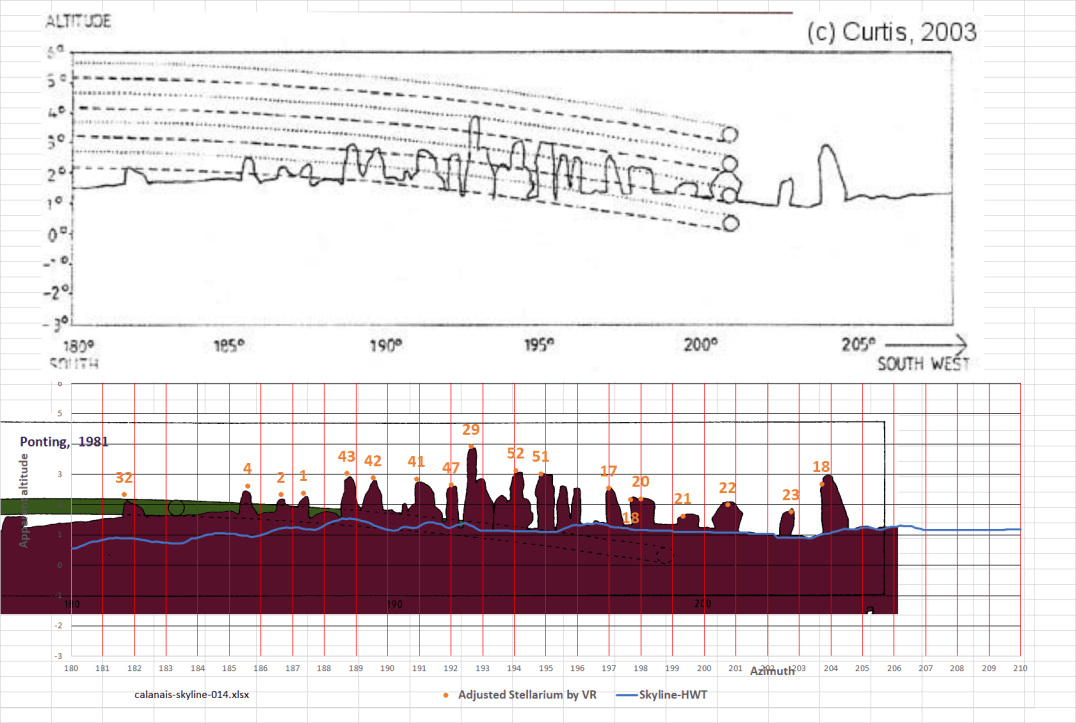
Plan of Callanish I
(Drawing: Gerald Ponting from RCAHMS original)
Archaeoastronomy
As with many megalithic settings across the world, it is thought there are astronomical alignments at Callanish I. The most famous of these alignments is that of the Major Lunar Standstill which occurs roughly every 18.6 years. Much of the work in this area was done by Margaret Curtis, Gerald Ponting and Ron Curtis from earlier research by Alexander Thom and Gerald Hawkins.
At Callanish I, the moon appears to roll along the top of the hill range known as "the Sleeping Beauty" before disappearing below the horizon. However, there is a notch in the horizon at which the moon "re-gleams".
One of the purposes of the Callanish3D project is to use Stellarium to simulate and validate some of these archaeo-astronomical theories.


